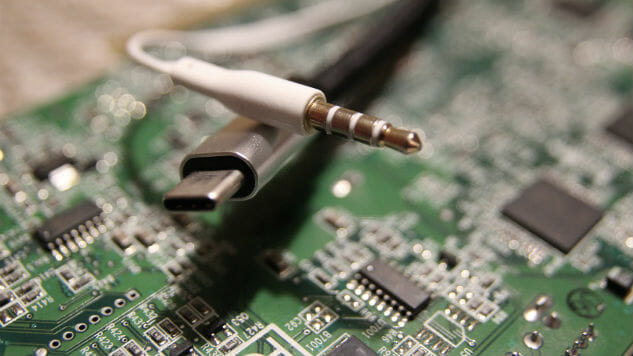5 Ways USB Type-C Headphones Will Improve Our Lives

Phone connector, audio jack, TRS, mini, 1/4 inch or 1/8th inch jack. There are a lot of names for the port you use to plug in your headphones. There are many variations and different sizes, but the audio jack has been around in more or less the same form since 1878. The electronics that drive it have also remained largely unchanged. However, with digital audio quality getting better and portable devices getting thinner, the port is overdue for an update.
So, how do you build a new standard that competes against something that has survived for over 130 years and continued to thrive in the Digital Age? The answer will likely be a new audio standard by Intel using USB Type-C.
Wait, what’s “USB Type-C”?
The quick, non-technical explanation is that USB Type-C is a new type of data plug for USB devices. It’s backwards-compatible with other USB devices using an adaptor, and it adds new features that you will love. First of all, like Apple’s Lightning connector, it’s reversible. No more trying to plug in your USB cable, flipping it over and trying again. Second it’s more compact, just a bit larger than the MicroUSB port found on most Android devices today.
There are more features (like extremely high transfer speeds), but for the purposes of this article we’ll be focusing on the features applicable to audio headphones.
1. Analog support for compatibility with your old headphones
Let’s get your biggest fear out of the way first. Those headphones you spent a week’s wages on isn’t going to be obsolete. At least, not yet.
As explained above, the plug for USB Type-C was designed with a variety of new features. Most people rightly focused on the fact you can plug it in right side up or upside down. However, one more new feature is what are called Sideband Unit (SBU) pins. It’s an ugly, technical name. All you have to know is that there are two of them, and they’re each capable of carrying a channel of analog audio.
For you, this means simple adaptor could make its way to market that takes the analog signals from a USB Type-C port and delivers stereo audio so you can still plug into your old, trusty ?Sennheisers.
2. High Resolution Audio

The move from standard definition to HD has treated our eyes, but most people are still listening to their music on headphones that only barely match the limit of human perception. Audiophiles look to expensive audio systems with tubes and braided cables to create the fullest sound reproduction, but they are not very portable.
-

-

-

-

-

-

-

-

-

-

-

-

-

-

-

-

-

-

-

-

-

-

-

-

-

-

-

-

-

-

-

-

-

-

-

-

-

-

-

-











































